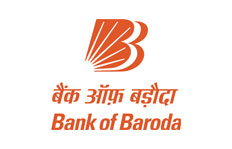Oracle 12c Data Guard Training
ITS is well known for Oracle training across India. ITS team has implemented and configured Data guard and Active data guard for many companies and provided support. ITS offers Oracle 12c Data Guard training from rich experience trainer having live implementation experience.
Live classroom and Online training both options :
Apart from live classroom, ITS offers Oracle Data Guard online course with instructor led training.
Oracle 12c Data Guard
(32 hours)
- Oracle 12c Data Guard solution protects your Oracle database against planned and unplanned downtimes
- Build highly available systems.
- Offload business processing needs to another system.
- Offload backup needs to another system.
- Oracle Data Guard can be used to support various production functions. These functions include reporting, querying and testing, while in a standby role.
- Oracle License Ekit from Oracle university
- 25% discount on certification exam (3 Months Validity*)
- Course completion certificate from Oracle University
Oracle 12c Data Guard – 32 hours
Course Topics
Introduction to Oracle Data Guard
What Is Oracle Data Guard?
Types of Standby Databases
Types of Data Guard Services
Role Transitions: Switchover and Failover
Oracle Data Guard Broker Framework
Choosing an Interface for Administering a Data Guard Configuration
Oracle Data Guard: Architecture(Overview)
Primary Database Processes
Networking for Oracle Data Guard
Networking Overview
Listener.ora Configuration
Statics vs. Dynamic Registration
Static Entries for Database Duplication and SQL Maintenence
Static Entries for Broker Operations
Oracle Network Configuration Tuning
Tnsnames.ora Configuration
Creating a Physical Standby Database by Using SQL and RMAN Commands
Steps to Create a Physical Standby Database
Preparing the Primary Database
FORCE LOGGING Mode
Configuring Standby Redo Logs
Creating Standby Redo Logs
Using SQL to Create Standby Redo Logs
Viewing Standby Redo Log Information
Setting Initialization Parameters on the Primary Database to Control Redo Transport
Oracle Data Guard Broker: Overview
Oracle Data Guard Broker: Features
Data Guard Broker: Components
Data Guard Broker: Configurations
Data Guard Broker: Management Model
Data Guard Broker: Architecture
Data Guard Monitor: DMON Process
Benefits of Using the Data Guard Broker
Comparing Configuration Management With and Without the Data Guard Broker
Creating a Data Guard Broker Configuration
Data Guard Broker: Requirements
Data Guard Broker and the SPFILE
Data Guard Monitor: Configuration File
Data Guard Broker: Log Files
Creating a Broker Configuration
Defining the Broker Configuration and the Primary Database Profile
Adding a Standby Database to the Configuration
Enabling the Configuration
Creating a Physical Standby Database by Using Enterprise Manager Cloud Control
Using Oracle Enterprise Manager to Create a Broker Configuration
Creating a Configuration
Creating a New Configuration
Adding a Standby Database to an Existing Configuration
Using the Add Standby Database Wizard
Standby Database Creation: Processing
Standby Database Creation: Progress
Verifying a Data Guard Configuration
Creating a Logical Standby Database
Benefits of Implementing a Logical Standby Database
Logical Standby Database: SQL Apply Architecture
SQL Apply Process: Architecture
Preparing to Create a Logical Standby Database
Unsupported Objects
Unsupported Data Types
Checking for Unsupported Tables
Checking for Tables with Unsupported Data Types
Creating and Managing a Snapshot Standby Database
Snapshot Standby Databases: Overview
Snapshot Standby Database: Architecture
Converting a Physical Standby Database to a Snapshot Standby Database
Activating a Snapshot Standby Database: Issues and Cautions
Snapshot Standby Database: Target Restrictions
Viewing Snapshot Standby Database Information
Using DGMGRL to View Snapshot Standby Database Information
Converting a Snapshot Standby Database to a Physical Standby Database
Using Oracle Active Data Guard
Oracle Active Data Guard
Using Real-Time Query
Checking the Standby’s Open Mode
Understanding Lag in an Active Data Guard Configuration
Monitoring Apply Lag: V$DATAGUARD_STATS
Monitoring Apply Lag: V$STANDBY_EVENT_HISTOGRAM
Setting a Predetermined Service Level for Currency of Standby Queries
Configuring Zero Lag Between the Primary and Standby Databases
Configuring Data Protection Modes
Data Protection Modes and Redo Transport Modes
Maximum Protection Mode
Maximum Availability Mode
Maximum Performance Mode
Comparing Data Protection Modes
Setting the Data Protection Mode by Using DGMGRL
Setting the Data Protection Mode
Performing Role Transitions
Role Management Services
Role Transitions: Switchover and Failover
Switchover
Preparing for a Switchover
Performing a Switchover by Using DGMGRL
Performing a Switchover by Using Enterprise Manager
Considerations When Performing a Switchover to a Logical Standby Database
Situations That Prevent a Switchover
Using Flashback Database in a Data Guard Configuration
Using Flashback Database in a Data Guard Configuration
Overview of Flashback Database
Configuring Flashback Database
Configuring Flashback Database by Using Enterprise Manager
Using Flashback Database Instead of Apply Delay
Using Flashback Database and Real-Time Apply
Using Flashback Database After RESETLOGS
Flashback Through Standby Database Role Transitions
Enabling Fast-Start Failover
Fast-Start Failover: Overview
When Does Fast-Start Failover Occur?
Installing the Observer Software
Fast-Start Failover Prerequisites
Configuring Fast-Start Failover
Setting the Lag-Time Limit
Configuring the Primary Database to Shut Down Automatically
Automatic Reinstatement After Fast-Start Failover
Managing Client Connectivity
Understanding Client Connectivity in a Data Guard Configuration
Understanding Client Connectivity: Using Local Naming
Preventing Clients from Connecting to the Wrong Database
Managing Services
Understanding Client Connectivity: Using a Database Service
Creating Services for the Data Guard Configuration Databases
Configuring Role-Based Services
Adding Standby Databases to Oracle Restart Configuration
Backup and Recovery Considerations in an Oracle Data Guard Configuration
Using RMAN to Back Up and Restore Files in a Data Guard Configuration
Offloading Backups to a Physical Standby
Restrictions and Usage Notes
Backup and Recovery of a Logical Standby Database
Using the RMAN Recovery Catalog in a Data Guard Configuration
Creating the Recovery Catalog
Registering a Database in the Recovery Catalog
Setting Persistent Configuration Settings
Patching and Upgrading Databases in a Data Guard Configuration
Upgrading an Oracle Data Guard Broker Configuration
Upgrading Oracle Database in a Data Guard Configuration with a Physical Standby Database
Upgrading Oracle Database in a Data Guard Configuration with a Logical Standby Database
Using DBMS_ROLLING to Upgrade the Oracle Database
Requirements for Using DBMS_ROLLING to Perform a Rolling Upgrade
Leading Group Databases and Leading Group Master
Trailing Group Databases and Trailing Group Master
Performing a Rolling Upgrade by Using DBMS_ROLLING
Monitoring a Data Guard Broker Configuration
Monitoring the Data Guard Configuration by Using Enterprise Manager Cloud Control
Viewing the Data Guard Configuration Status
Monitoring Data Guard Performance
Viewing Log File Details
Enterprise Manager Metrics and Alerts
Data Guard Metrics
Managing Data Guard Metrics
Viewing Metric Value History
Optimizing a Data Guard Configuration
Monitoring Configuration Performance by Using Enterprise Manager Cloud Control
Optimizing Redo Transport Services
Setting the ReopenSecs Database Property
Setting the NetTimeout Database Property
Optimizing Redo Transmission by Setting MaxConnections
Setting the MaxConnections Database Property
Compressing Redo Data by Setting the RedoCompression Property
Delaying the Application of Redo
Oracle Database Exadata Cloud Service Overview
Introducing Exadata Cloud Service
Service Configuration, Connection, Architecture & Availability
Data Security & Management Responsibilities
Storage Configuration & Management Details
Simple Web-Based Provisioning & Management
REST APIs
Backup and Recovery
Migrating to Exadata Cloud Service
Exam Code : 1z0-066
Questions : 92
Passing Score : 61%


































































